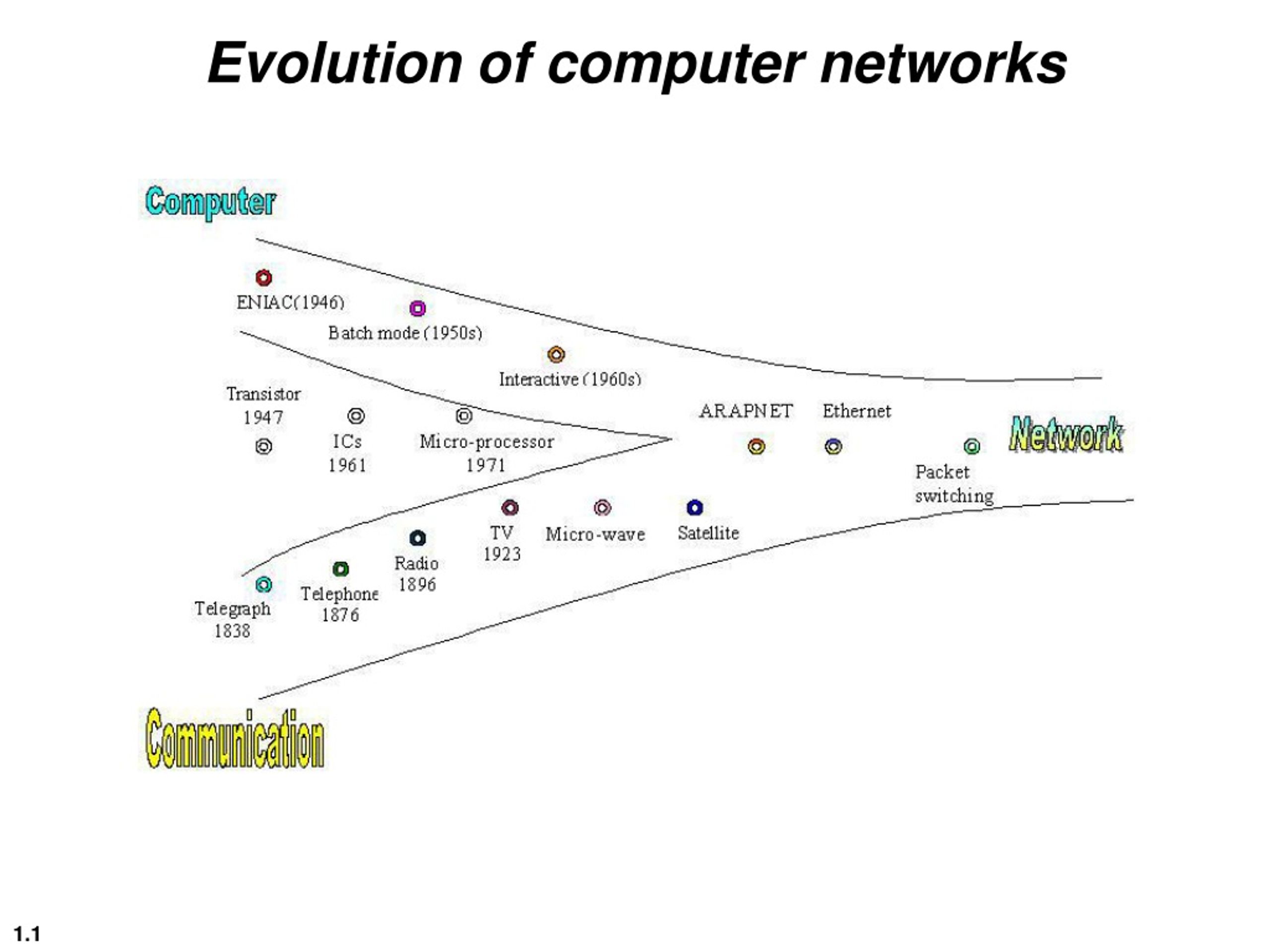
Table of Contents
Introduction
The Impact of Networking – In today’s digital era, networks play a fundamental role in shaping our daily lives. From the internet connecting billions of people worldwide to corporate networks ensuring seamless business operations, the importance of networking technology cannot be overstated. As innovations continue to evolve, networks are becoming more robust, secure, and intelligent, impacting everything from communication and commerce to healthcare and education.
Understanding Networking: The Backbone of Connectivity
A network, in its simplest form, is a group of interconnected devices that communicate with one another. This can range from small-scale local area networks (LANs) to massive global networks like the internet. Networking enables devices to share resources, exchange data, and enhance overall efficiency in various industries.
Types of Networks
- Local Area Network (LAN) – Typically found in homes, offices, and schools, LANs connect computers and devices within a limited area.
- Wide Area Network (WAN) – Extends over large geographic areas, such as cities or even countries, with the internet being the most significant example.
- Wireless Networks – These include Wi-Fi and mobile networks that allow seamless connectivity without physical cables.
- Cloud Networks – Leveraging cloud technology to store, access, and manage data remotely.
- Edge Computing Networks – Distributed computing paradigms that bring data processing closer to the source to enhance speed and efficiency.
The Role of Networks in Modern Society
In today’s interconnected world, networks have become the backbone of modern society. From social interactions to economic growth, networks facilitate communication, collaboration, and innovation. The digital age has further amplified the significance of networking, integrating technology into every aspect of human life. This article explores the role of networks in modern society, highlighting their impact on various domains and discussing how innovation continues to shape the way we connect and function.
The Evolution of Networks
Networks have evolved from simple human interactions to complex digital infrastructures. Historically, networks existed in the form of trade routes, postal services, and telecommunication lines. However, the advent of the internet and wireless technologies has revolutionized networking, making information exchange instantaneous and borderless.
The Digital Transformation
The shift from traditional to digital networks has significantly altered how we communicate and conduct business. The internet, cloud computing, and blockchain technology have redefined networking by offering greater efficiency, transparency, and security.
- The Internet: Arguably the most powerful network in existence, the internet connects billions of people and devices worldwide. It serves as the foundation for social media, e-commerce, and global communication.
- Cloud Computing: This innovation allows businesses and individuals to store and access data remotely, fostering collaboration across geographical boundaries.
- Blockchain Technology: By decentralizing information storage and transactions, blockchain enhances security and trust in digital interactions.
The Role of Networks in Key Sectors
1. Social Connectivity and Communication
Social networks have transformed the way individuals interact, share information, and form communities. Platforms such as Facebook, Twitter, and LinkedIn enable global conversations, activism, and professional networking.
- Impact on Personal Relationships: Networks have made it easier to stay connected with loved ones, regardless of distance.
- Influence on Social Movements: Many political and social movements gain momentum through networked platforms, increasing awareness and engagement.
- Challenges: Privacy concerns and misinformation remain significant issues within social networks.
2. Economic Growth and Business Innovation
Networks play a crucial role in driving economic activities, enabling businesses to operate efficiently and expand their reach.
- E-commerce: Companies like Amazon and Alibaba leverage vast logistical and digital networks to provide seamless shopping experiences.
- Remote Work: With tools like Zoom, Slack, and Microsoft Teams, businesses can maintain productivity and collaboration irrespective of location.
- Global Supply Chains: Networks facilitate international trade and manufacturing, ensuring goods and services reach global markets efficiently.
3. Education and Knowledge Sharing
Educational networks have broken geographical barriers, making learning accessible to people worldwide.
- Online Learning Platforms: Coursera, Udemy, and Khan Academy provide quality education to millions.
- Academic Collaboration: Researchers and students can share resources and collaborate on projects through digital networks.
- Challenges: The digital divide remains an obstacle, with disparities in internet access limiting opportunities for some populations.
4. Healthcare and Medical Networks
Healthcare has greatly benefited from the integration of networks, improving patient care and medical research.
- Telemedicine: Remote consultations and digital health records enhance healthcare accessibility.
- Medical Research: Scientists and doctors collaborate globally to develop treatments and vaccines.
- Data Security: Protecting patient information from cyber threats remains a key concern.
5. Smart Cities and Urban Development
Modern urban planning relies on interconnected networks to enhance efficiency and sustainability.
- IoT and Smart Infrastructure: Sensors and AI-driven analytics help manage traffic, waste, and energy consumption.
- Public Safety: Surveillance networks and emergency response systems improve city security.
- Sustainability Initiatives: Networks facilitate smart grids and renewable energy distribution.
The Future of Networks: Trends and Innovations
The future of networking is driven by emerging technologies that promise to enhance connectivity and efficiency.
- 5G and Beyond: Faster, more reliable internet speeds will revolutionize industries such as autonomous vehicles and telemedicine.
- AI and Machine Learning: Intelligent networks will optimize data processing and decision-making.
- Quantum Computing: This technology could drastically improve encryption and problem-solving capabilities.
- Decentralized Networks: With growing concerns over privacy and control, decentralized networks offer new possibilities for secure and autonomous digital interactions.
The Future of Networking: Innovations and Trends
In today’s hyper-connected world, networking technology is at the heart of digital transformation. From the rise of 5G and Wi-Fi 6 to the advent of artificial intelligence (AI) in network management, innovations in networking are reshaping industries, economies, and our daily lives. As we look to the future, the evolution of networking will continue to drive efficiency, connectivity, and new possibilities.
This article explores the latest innovations and trends in networking, highlighting their impact on society and what we can expect in the coming years.
The Evolution of Networking Technology
Networking has come a long way from its early days of dial-up internet and local area networks (LANs). With the explosive growth of data, the demand for faster, more reliable, and intelligent networking solutions has driven major advancements. Today, several key technologies are shaping the future of networking:
- 5G and Beyond
The rollout of 5G networks is one of the most significant advancements in networking. With speeds up to 100 times faster than 4G and ultra-low latency, 5G enables new applications such as autonomous vehicles, smart cities, and remote surgeries. Looking ahead, research on 6G is already underway, promising even greater speed, efficiency, and connectivity. - Wi-Fi 6 and Wi-Fi 7
Wi-Fi 6 has improved wireless networking by offering higher speeds, better security, and reduced latency. It supports more simultaneous connections, making it ideal for smart homes and IoT devices. Meanwhile, Wi-Fi 7 is on the horizon, promising even higher data rates and enhanced performance in congested environments. - Edge Computing and Network Decentralization
Traditionally, data processing has been centralized in cloud data centers. However, edge computing is changing that by bringing processing closer to the source of data. This reduces latency, enhances security, and improves efficiency—crucial for applications like industrial automation and augmented reality (AR). - AI and Machine Learning in Networking
AI-driven networking is revolutionizing how networks are managed. Machine learning algorithms analyze traffic patterns, detect anomalies, and optimize performance in real time. AI-powered automation reduces downtime, enhances security, and improves user experience. - Quantum Networking
Although still in its early stages, quantum networking has the potential to transform secure communications. By leveraging quantum mechanics principles such as entanglement and superposition, quantum networks promise unbreakable encryption, ensuring ultra-secure data transmission.
The Impact of Networking Innovations on Society
Networking advancements are more than just technical improvements; they have profound implications for businesses, governments, and individuals. Below are some key areas where future networking technologies will have a major impact:
1. Smart Cities and IoT Expansion
The future of urban living is driven by networked infrastructure. Smart traffic lights, connected waste management, and real-time monitoring of public utilities will make cities more efficient, sustainable, and responsive to residents’ needs.
2. Remote Work and Digital Collaboration
The pandemic accelerated the shift to remote work, and networking technology has made it possible for businesses to operate seamlessly across borders. Innovations like AI-powered video conferencing, 5G-enabled remote workstations, and virtual reality (VR) meeting spaces will redefine how people collaborate.
3. Healthcare and Telemedicine
Networking advancements are revolutionizing healthcare. Remote patient monitoring, robotic surgeries, and AI-driven diagnostics rely on fast, secure, and stable networks. With 5G and edge computing, real-time medical consultations and treatments will become more accessible worldwide.
4. Cybersecurity and Data Privacy
As networking becomes more complex, cybersecurity threats are also evolving. AI-driven security solutions, blockchain-based encryption, and quantum cryptography will play a crucial role in protecting sensitive data and ensuring privacy.
Challenges and Considerations
Despite the exciting advancements in networking, several challenges remain:
- Infrastructure Costs – Deploying new network technologies, such as 5G and quantum networking, requires significant investment in infrastructure.
- Cybersecurity Risks – As networks become more advanced, cybercriminals also develop sophisticated attacks. Protecting data from breaches and ensuring network security will be critical.
- Regulatory and Ethical Concerns – Governments and organizations must address issues related to data privacy, digital divide, and ethical AI usage.
Challenges and Solutions in Networking
In today’s interconnected world, networking plays a crucial role in both personal and professional environments. Whether it’s enabling global business operations, supporting remote work, or connecting billions of devices through the Internet of Things (IoT), networks form the backbone of modern digital communication. However, despite their importance, networking infrastructures face numerous challenges. From security threats and bandwidth limitations to scalability issues and emerging technologies, the need for robust networking solutions has never been greater.
This article explores the key challenges in networking and provides actionable solutions to overcome them. We will also discuss how innovations are shaping the future of networking and what it means for businesses and individuals alike.
1. Security Threats in Networking
The Challenge: Rising Cybersecurity Threats
One of the biggest challenges in networking today is the growing number of cybersecurity threats. Cyberattacks such as phishing, ransomware, DDoS attacks, and data breaches have become more sophisticated, targeting businesses and individuals alike. With the increasing adoption of cloud computing, remote work, and IoT, cybercriminals have more entry points to exploit.
A single security breach can result in:
- Loss of sensitive data
- Financial damages
- Reputation loss for businesses
- Disruptions in essential services
The Solution: Advanced Security Measures
To counter cyber threats, organizations and individuals must implement multi-layered security strategies:
- Zero Trust Architecture (ZTA) – This security model assumes that no one inside or outside the network can be trusted without verification.
- Encryption and VPNs – Ensuring data privacy through end-to-end encryption and using Virtual Private Networks (VPNs) for secure access.
- AI and Machine Learning for Threat Detection – Modern security tools use AI to detect anomalies and prevent cyberattacks in real time.
- Regular Security Audits and Employee Training – Conducting routine security assessments and training employees on cybersecurity best practices.
2. Scalability and Network Congestion
The Challenge: Growing Network Traffic
With the rise of streaming services, online gaming, remote work, and cloud applications, network congestion has become a major issue. High traffic loads can lead to latency, slow data transmission, and even downtime, affecting user experience and business operations.
The Solution: Upgrading Infrastructure and Optimizing Bandwidth
- Adoption of 5G and Wi-Fi 6 – These technologies provide higher speeds, lower latency, and better capacity to handle multiple devices.
- Network Load Balancing – Distributing traffic across multiple servers to prevent overloads.
- Edge Computing – Reducing network congestion by processing data closer to the source rather than relying solely on centralized cloud services.
- Quality of Service (QoS) Implementation – Prioritizing critical applications to ensure smooth performance for essential services.
3. The Complexity of Network Management
The Challenge: Managing Large-Scale Networks
As networks expand, managing thousands of interconnected devices, servers, and applications becomes increasingly complex. IT teams often struggle with configuration issues, monitoring network health, and troubleshooting errors in large-scale environments.
The Solution: Automation and AI-Driven Networking
- Software-Defined Networking (SDN) – This approach separates network management from physical hardware, allowing centralized control and better scalability.
- Network Automation Tools – Using AI-driven tools like Cisco DNA Center or Juniper Mist to automate tasks such as traffic monitoring, security updates, and device configuration.
- Predictive Analytics for Proactive Maintenance – AI can predict network failures before they happen, reducing downtime and improving reliability.
4. The Rise of IoT and Its Security Challenges
The Challenge: IoT Vulnerabilities
The Internet of Things (IoT) is revolutionizing industries, but it also presents new security challenges. Many IoT devices lack built-in security measures, making them easy targets for hackers. Common risks include:
- Unauthorized access to smart devices
- Data breaches in connected ecosystems
- Malware attacks on IoT networks
The Solution: Strengthening IoT Security
- Implementing Strong Authentication – Using multi-factor authentication (MFA) and secure device credentials.
- Regular Firmware Updates – Keeping IoT device software up to date to patch vulnerabilities.
- Network Segmentation – Isolating IoT devices from critical business networks to prevent widespread attacks.
- Adopting Blockchain for IoT Security – Blockchain’s decentralized nature can enhance data integrity and authentication in IoT networks.
5. Cloud Networking and Data Privacy
The Challenge: Balancing Cloud Efficiency with Data Security
Cloud computing has transformed the way businesses operate, but it also raises concerns about data privacy, compliance, and dependency on third-party providers. With regulations like GDPR and CCPA, businesses must ensure they handle user data responsibly.
The Solution: Hybrid Cloud and Compliance Strategies
- Hybrid Cloud Deployments – Combining public and private clouds to balance performance and security.
- End-to-End Encryption for Cloud Data – Protecting sensitive information stored and transmitted over the cloud.
- Compliance with Global Regulations – Adopting frameworks such as GDPR and HIPAA to ensure legal compliance.
- Using Secure Access Service Edge (SASE) – A cloud-native security framework that integrates network and security functions.
6. The Future of Networking: Innovations and Trends
Emerging Trends in Networking
- Quantum Networking – Utilizing quantum mechanics for ultra-secure communications.
- AI-Driven Network Optimization – Automating network management using AI and machine learning.
- 6G Development – While 5G is still expanding, researchers are already working on 6G, promising even faster speeds and smarter connectivity.
- Satellite Internet (Starlink & Beyond) – Providing global internet coverage, especially in remote areas.
What These Innovations Mean for Society
- Faster and more reliable internet access for all
- Enhanced cybersecurity and privacy measures
- Greater efficiency in business operations
- Empowerment of emerging technologies like autonomous vehicles and smart cities
Conclusion
Networking is the backbone of modern civilization, shaping the way we live, work, and interact. As technology continues to advance, networks will become even more integral to our daily lives. Embracing innovations like 5G, AI-driven networking, and blockchain security will ensure a more connected, efficient, and secure future for all.
Whether it’s through enhancing communication, driving business transformation, or improving healthcare and education, networks play an indispensable role in our digital world. By addressing challenges and leveraging emerging technologies, we can build a more connected and sustainable future.
Read Also: Frequently Seen Cryptocurrency Scams and How to Avoid Them










